Frontline report: Russia’s “bag tactics” near Kurakhove meets Ukrainian camouflaged Leopard tank
Russian forces trying to encircle Ukrainian positions found their armored columns devastated by concealed tanks and drone strikes.
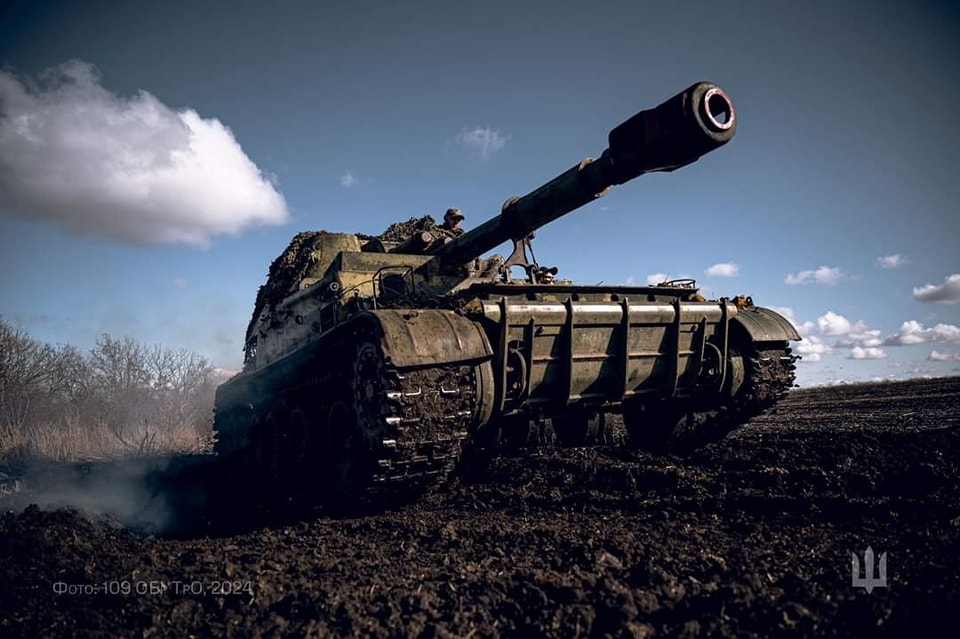

Today, there are a lot of updates from the Kurakhove direction in Donetsk Oblast.
Here, amid escalating efforts to bypass fortified defenses, Russian forces focused on a turning maneuver aimed at forcing Ukrainian withdrawals and capturing key settlements without direct confrontation. However, so far, Ukrainian forces managed to disrupt this operation through relentless counterattacks, forcing the Russians to revert to costly frontal assaults and continue fighting on terms dictated by the defenders.
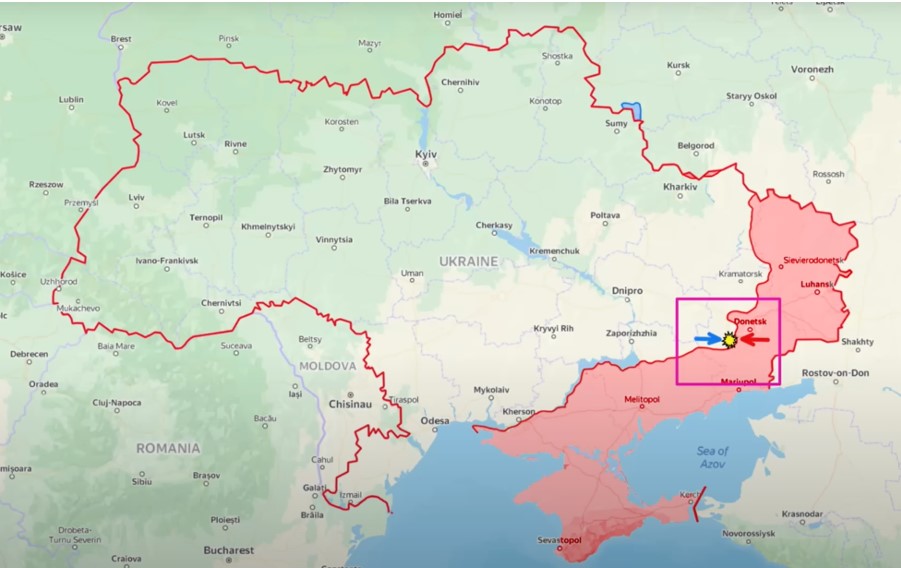
Kurakhove is the key to Pokrovsk’s defense
Kurakhove is a key town for a potential Russian advance toward Pokrovsk, making it the focus of an aggressive offensive aimed at capturing it while minimizing urban clashes. With a pre-war population of 20,000, Kurakhove also hosts significant industrial facilities, including a large thermal plant. Although damaged by Russian attacks in October 2022, the plant’s fortified structures could serve as defensive strongholds for Ukrainian forces.
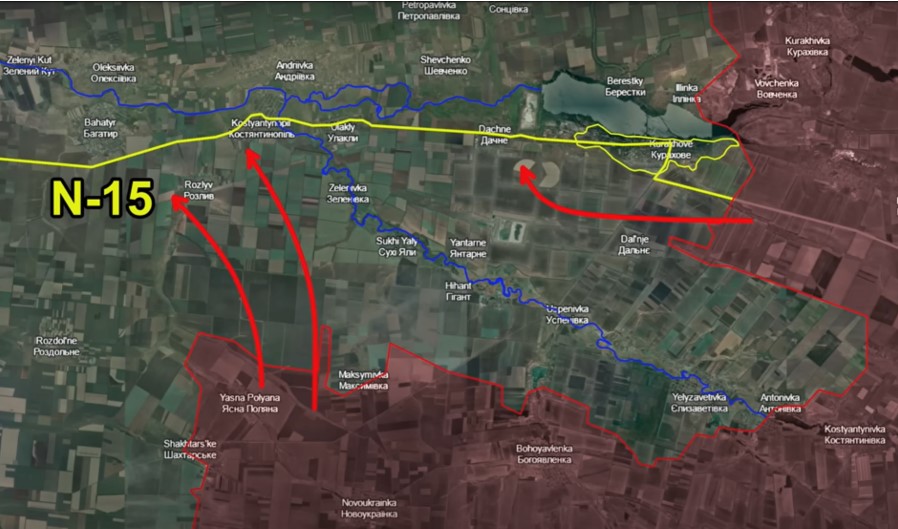
To circumvent these challenges, Russian forces have intensified their sudden advances, aiming to sever the N15 Highway, a critical supply road for Ukrainian troops and ammunition. As detailed in the previous report, Russian forces have launched a multifaceted offensive employing various tactics to advance. This includes deploying small infantry groups to infiltrate plantations and villages, creating a gradual buildup of forces.
“Bag tactics”: Russia’s encirclement strategy
These maneuvers, often called “bag tactics,” involve encircling Ukrainian positions by spreading out in a comb-like formation. This method aims to box in Ukrainian troops, forcing them into untenable positions and compelling retreats under pressure from attacks on multiple flanks.
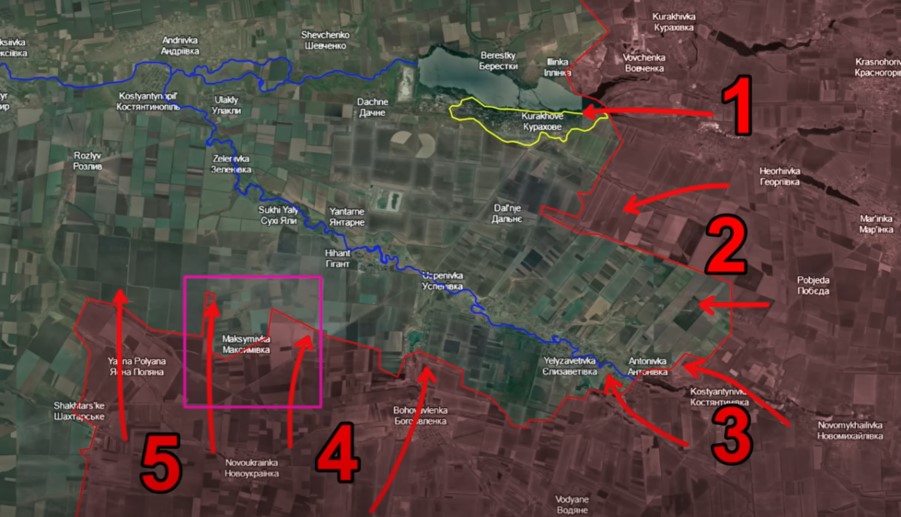
The area’s geography poses significant challenges for Ukrainian defenders. The topographic map shows that Ukrainian-held settlements are situated in lowlands while Russian forces advance from higher terrain. This elevation advantage enables Russian troops to exert effective fire control, target Ukrainian positions with long-range artillery, and closely monitor their movements. In response, Ukrainian forces have begun regrouping closer to a line of settlements that offer more favorable defensive positions and improve logistical support for troop movements and supplies.
Dalne is the new flashpoint in Russia’s offensive
Recent reports highlight a concentrated Russian effort to advance toward the village of Dalna. Their objective here is a flanking maneuver through Dalna aimed at creating the threat of operational encirclement and bypassing the need to fight for each settlement along the line where they have been incurring heavy losses. With limited reserves and time, Russian forces cannot afford to confront every village individually. Aware of this strategy, the Ukrainian command has launched continuous counterattacks on Dalna, effectively disrupting Russian attempts to establish firm control over the area.
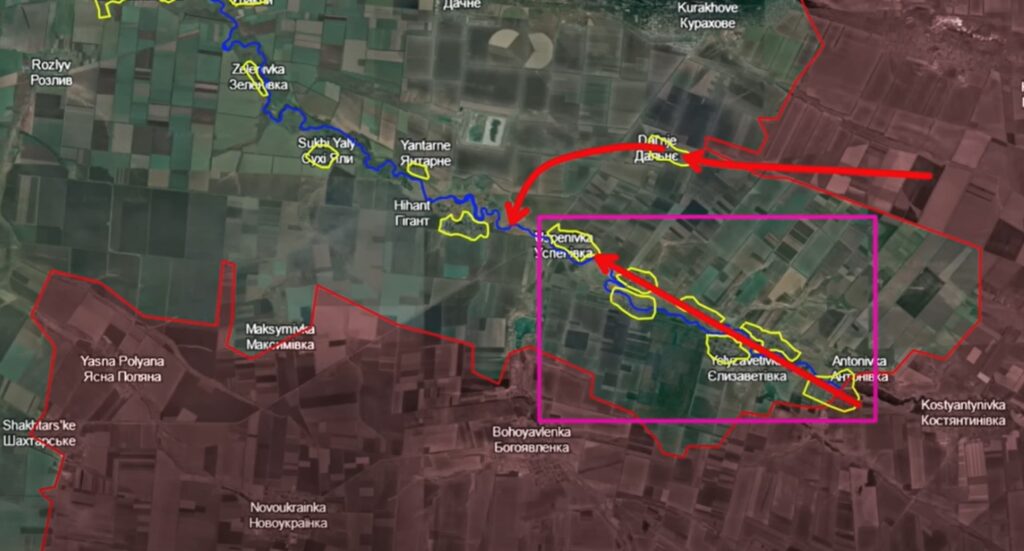
Dalne, a small settlement with limited potential for establishing strong defensive positions, is partially shielded to the south by tree lines. However, even if Russian forces attempt to secure a foothold here, their options for advancing westward through open fields are severely constrained by the nearby Ukrainian trench networks south of Kurakhove and the major defensive base at Uspenivka.
Ukrainian counterattacks in the area rely on swift, targeted operations supported by armored vehicles and MRAPs. They aim to disrupt Russian troop concentrations and repel mechanized breakthrough attempts.
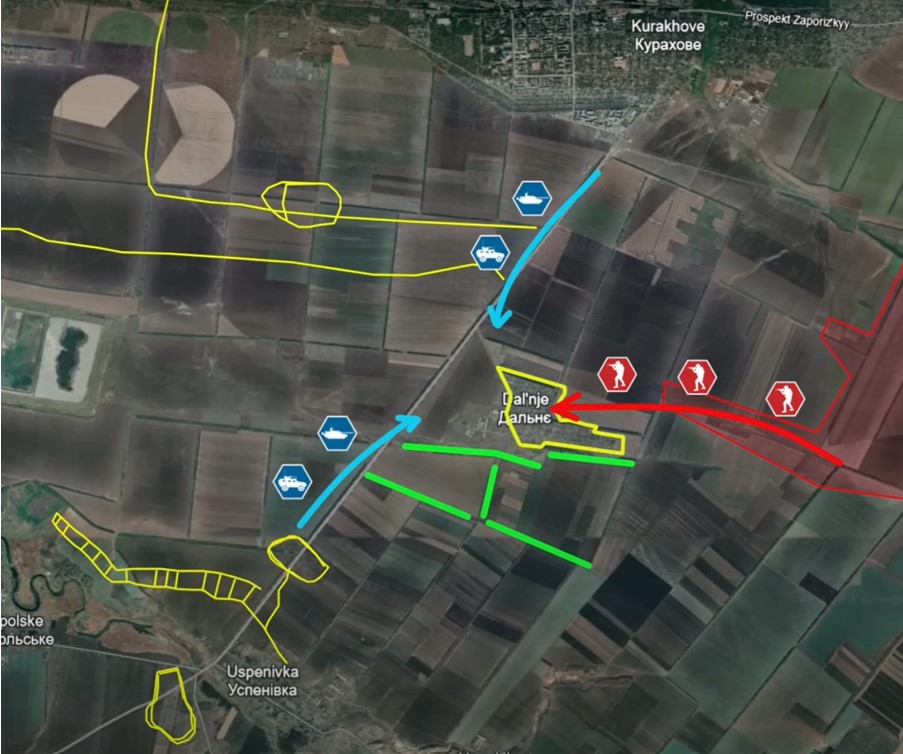
Ukrainian Leopard tank devastates Russian column
Geolocated footage captured a striking Ukrainian operation in which a camouflaged Leopard tank destroyed an entire Russian armored column advancing toward Dalne. Unaware of the Leopard’s position, the column moved forward until it came under direct fire, destroying most Russian vehicles before they could react.
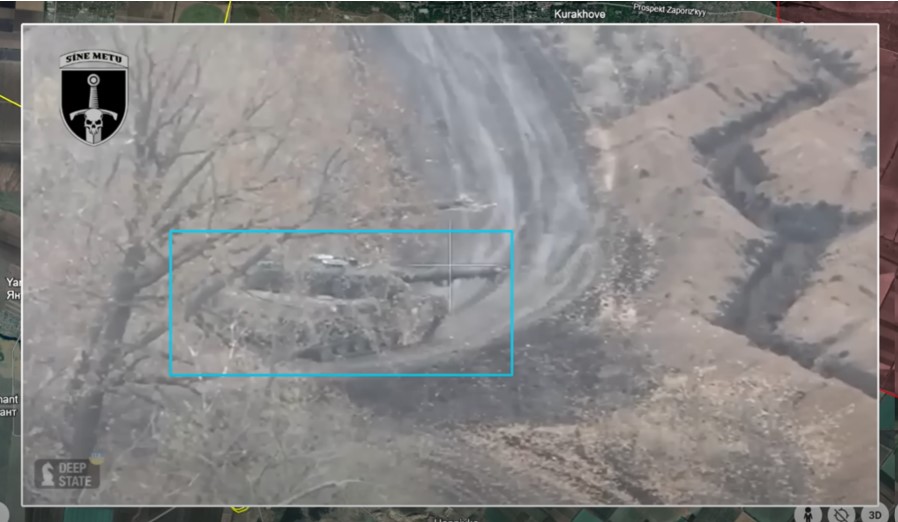
One armored vehicle attempted to escape by reversing, but its slow retreat made it an easy target for the Leopard. The few Russian soldiers who survived and sought cover were later neutralized by grenades dropped from Ukrainian drones, showcasing the effective coordination of ground and aerial assets in the operation.
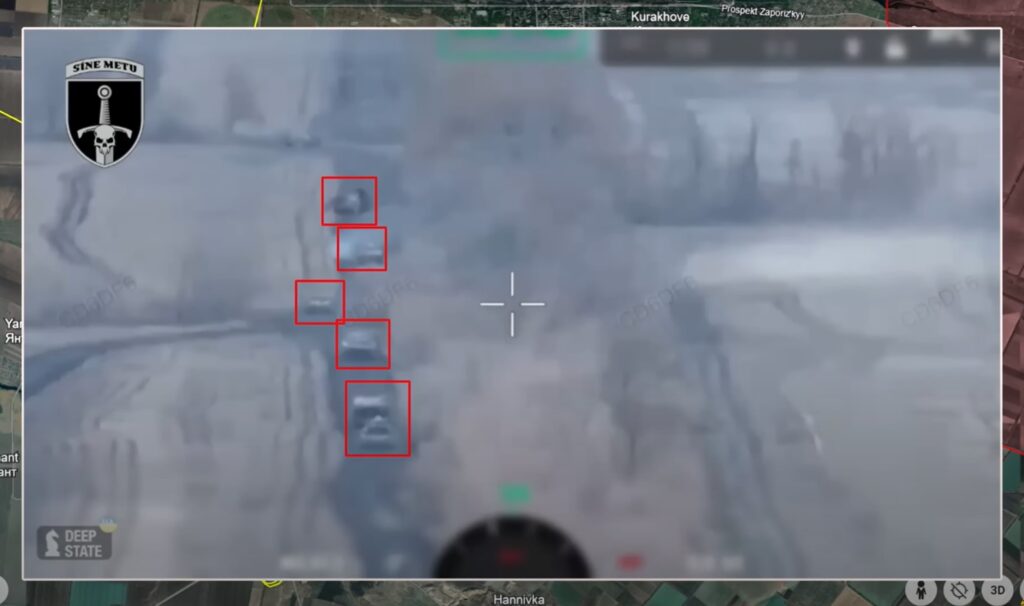
The deployment of tanks and armored vehicles by Ukrainian forces demonstrates their ability to maintain operational flexibility, including secure routes for moving and extracting armor and logistical supplies or a potential withdrawal. While recent reports indicate that Russian forces have partially entered Dalne, intense clashes for control of the settlement are still ongoing. Russians’ advance to Dalne has significantly stretched their supply lines, leaving their hold on the area tenuous. This allows Ukrainian forces to disrupt Russian logistics and regain the initiative.
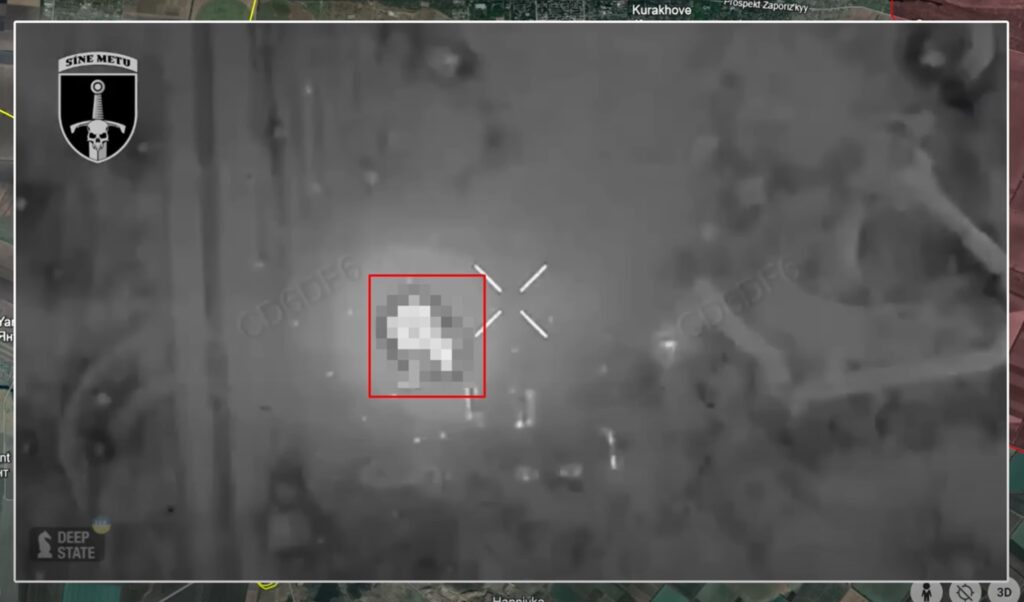
Overall, the Russian focus on Dalne reflects their strategy to achieve an operational encirclement of the entire settlement line where they have been incurring heavy losses. Aware of this intent, Ukrainian forces are conducting continuous counterattacks to delay Russian progress. The longer the Russians are kept from securing Dalne, the more they are forced to rely on costly frontal assaults on fortified settlements further south. If Ukrainian forces can hold Dalne long enough, Russian forces risk exhausting their offensive capacity before reaching their operational objectives, potentially forcing them into a prolonged pause to replenish reserves.
In our daily frontline report, we pair up with the military blogger Reporting from Ukraine to keep you informed about what is happening on the battlefield in the Russo-Ukrainian war.



